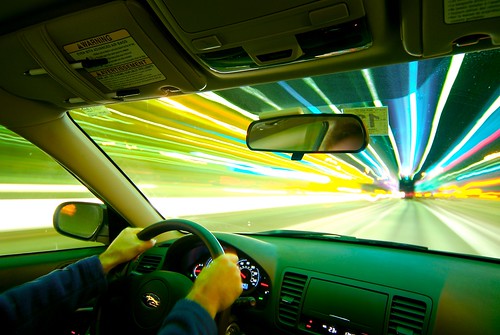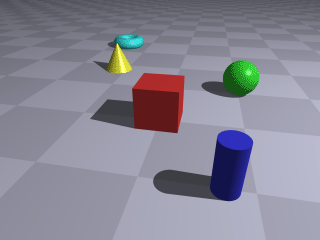FUJIFILM FinePix Real 3D System - two lenses stereo

 The 3D camera depends heavily on a newly developed chip called the ‘Real Photo Processor 3D’ which synchronizes the data passed to it by both sensors, and instantaneously blends the information into a single high quality image, for both
The 3D camera depends heavily on a newly developed chip called the ‘Real Photo Processor 3D’ which synchronizes the data passed to it by both sensors, and instantaneously blends the information into a single high quality image, for bothThe LCD monitor system has also been completely revised. The camera is fitted with a 2.8 inch, 230,000 pixel- LCD. Thanks to a new engineering approach, screen flickering and image deterioration, thought to be difficult to overcome, are reduced to an absolute minimum to achieve beautiful, natural 3D images. The screen will also resolve 2D images as any other camera LCD.

FinePix REAL 3D SYSTEM is also paving the way for new possibilities in 2D photo enjoyment. At the heart of the system, is a new concept camera fitted with dual lenses. Each lens can capture stills or movies from a slightly different position, producing the basis of the 3D image. By combining new dual lenses System, A new function was achieved. For example, Image quality improvement function (Simultaneous Dual-Image Shooting: Multi- Expression). For users, this is just one possibility from a dual lens camera. Other fascinating possibilities include:
- Simultaneous Dual Image Shooting: (Telephoto and Wide Angle)
- Simultaneous Dual-Image Shooting (film modes)
- Ultra-Wide Panoramic Shots Shooting
- Movie-Still Simultaneous

Camera makers are jumping into the 3-D photo market more than 20 years after the format was laughed out of town and ended up as Michael Jackson's sidekick in Captain Eo.
Recently, Fujifilm announced a two-lensed camera that takes images and movies in 3-D and captures wide-angle photos of single scenes simultaneously. As a result, we've heard some rumbling in the wires about other camera manufacturers coming out with their own version in the next year or so.
Since the lenses are 6-7 cm from each other (or about the same length between most people’s eyes), the Real 3-D's camera processes the images in real time to produce the stereoscopic 'trick' effect that makes them look as if they're floating in air. This is where the processing update of Fujitsu's 'Real Photo Processor 3-D' chip comes in.
The chip blends the dual images and all the important metrics (focus, zoom range and exposure) at once and pushes them out to the LCD, which is also on a 3-D display. By the time this camera is released next year, the company is promising to be able to shoot HD video on it as well.

www.fujifilm.com/products/digital_cameras/topics/2008/0922_02.html
Of course, there are several 3-D custom rigs out there that are producing 3-D images, but they're usually very expensive. Some have even made 3-D rigs out of two mainstream digital cameras. In the case of the 3-D Advantage, Casio, a company has attached a tri-delta beam splitter to a single point-and-shoot camera that creates a 3-D image with a single shutter. But a pro-ready camera ready to shoot 3-D images is better than a custom rig, for obvious user-friendly reasons.
 So while the majority of the renewed excitement about 3-D imaging has come from the display side and recent focus from the movie industry, don't expect Fujifilm to be the only one coming out with a consumer 3-D cam.
So while the majority of the renewed excitement about 3-D imaging has come from the display side and recent focus from the movie industry, don't expect Fujifilm to be the only one coming out with a consumer 3-D cam.
A few years ago, Olympus created a 3-D camera system for the da Vinci Surgical robot system that works in real time and is dependable enough to used during open surgery. They only have figure out how to transfer the tech to a more affordable, consumer friendly chassis and they'll be in the 3-D game. Don't be surprised if they've already figured out how to do that.


Lead photo and back display: tech-on
When I first heard that Fujifilm was to make an announcement about 3D digital photography here at Photokina, I subconsciously classified my expectation of the announcement to be some kind of technology teaser. So imagine my surprise when I discovered a comprehensive showcase of Fujifilm's FinePix Real 3D technologies.
Touch and try
On the stand I was able to use prototype FinePix Real 3D cameras, fitted with 3D screens, view pictures on larger 3D viewscreens, and some 3D print samples, if not any printers, were available for examination.

The FinePix Real 3D lens system works with two lenses, set apart, to produce a stereoscopic style imaging system. Fujifilm has developed an RP (Real Photo) 3D image processor chip that combines a pair of images to produce a virtual 3D effect, presumably working with the well known dual-lens attribute of parallax.
Seeing is believingOn the viewer side, FujiFilm has developed a 'light direction control module' that enables the LCD display to display alternate images to each eye, delivering a 3D experience – without having to wear special glasses.

The viewing system, both on the camera and in stand-alone monitors, works surprisingly well – as long as your gaze doesn't go too far off-axis. When this happens, the 3D effect disappears and you can even begin to see some double imaging.
3D prints
It has to be said that the 3D prints that Fujifilm had on show were rather reminiscent of those novelty 3D postcards that have been available for a long time. But there is potential there. A fine pitch lenticular screen is sandwiched with two images to give a three dimensional, if rather grainy, view.

Fuji doesn't just see its dual lens FinePix Real 3D cameras shooting 3D exclusively. As the 3D cameras require a pair of lenses, in 2D mode you can use one lens for recording a telephoto view while the other is shooting wide angle, or even a movie with one lens and stills with the other.
This means you can have two different views of the same moment. Fujifilm is also suggesting combining two simultaneously shot images taken with different colour and tone settings, resulting in an enhanced hybrid image. Ultra wide panoramas, stitching two images together, is another option.
Not just a research project
Fascinating new technologies have been showcased at shows like Photokina before, only never to be seen again. This time Fujifilm seem determined to bring FinePix Real 3D to market and we could have some products by the end of next year.
At the heart of the system, is a new concept camera fitted with dual lenses. Each lens can capture stills or movies from a slightly different position, producing the basis of the 3D image. By combining new dual lenses System, A new function was achieved. For example, Image quality improvement function (Simultaneous Dual-Image Shooting: Multi- Expression). For users, this is just one possibility from a dual lens camera. Other fascinating possibilities include:
Simultaneous Dual Image Shooting: (Telephoto and Wide Angle)
Simultaneous Dual-Image Shooting (film modes)
Ultra-Wide Panoramic Shots Shooting
Movie-Still Simultaneous
Imaging for the Future. More Than You Imagined
New dimensions in imaging mean a wealth of new possibilities which will revolutionise the way consumers enjoy imaging. Fujifilm is determined to leverage it considerable technical resources to explore 3D in everyway possible, to produce products that expand the imaging market, while at the same time, give future generations of consumers an even richer imaging experience than was conceived at the dawn of the digital age.


Stereoscopy is used in photogrammetry and also for entertainment through the production of stereograms. Stereoscopy is useful in viewing images rendered from large multi-dimensional data sets such as are produced by experimental data. Modern industrial three dimensional photography may use 3D scanners to detect and record three dimensional information.

The three-dimensional depth information can be reconstructed from two images using a computer by corresponding the pixels in the left and right images. Solving the Correspondence problem in the field of Computer Vision aims to create meaningful depth information from two images.

Traditional stereoscopic photography consists of creating a 3-D illusion starting from a pair of 2-D images. The easiest way to create depth perception in the brain is to provide the eyes of the viewer with two different images, representing two perspectives of the same object, with a minor deviation similar to the perspectives that both eyes naturally receive in binocular vision.

If eyestrain and distortion are to be avoided, each of the two 2-D images preferably should be presented to each eye of the viewer so that any object at infinite distance seen by the viewer should be perceived by that eye while it is oriented straight ahead, the viewer's eyes being neither crossed nor diverging. When the picture contains no object at infinite distance, such as a horizon or a cloud, the pictures should be spaced correspondingly closer together.

 Earth's magnetic field:
Earth's magnetic field:

0 Comments:
Post a Comment
<< Home